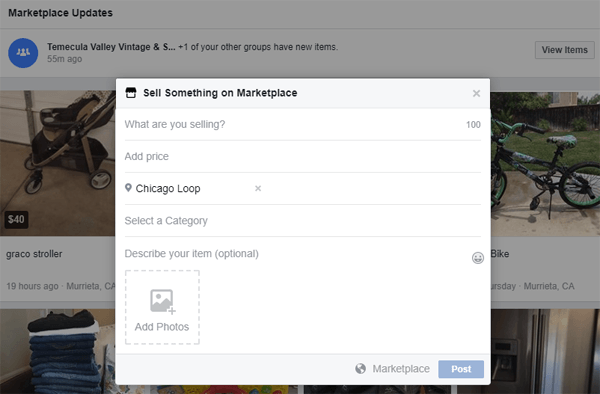Proof Social Commerce IS Happening

For a couple of years, social commerce has dominated the upcoming trends charts and digital marketing predictions. Stats told us that 52 percent of marketers believed that social commerce would be the most rapidly growing trend in 2016. Social commerce was the future, the harbinger of a new digital age, the revolution that marketers and retailers alike had been waiting for.
We are now halfway through 2017. So what is the state of social commerce now?
It does feel as though social commerce has faded into the background. There is no doubt that other trends and features have quashed the buzz around social commerce (videos and stories, in case you've been asleep for the past year). However, don't be fooled: social commerce is happening. In some ways, the lack of attention it has received of late is more of a testament to how it is already a natural part of our daily digital lives.
The Evolution of Social Commerce
Social commerce has been quietly evolving. From the introduction of the 'buy' button to retargeting ads which give you a nudge about an abandoned purchase, the way we shop online has unashamedly infiltrated our social media activity.
"75% of people have purchased something because they saw it on social media" - SproutSocial
The benefits of social commerce are clear to see. Customers are able to make a transaction then and there without leaving the platform to visit a company website, cutting out the middleman. Aside from streamlining the purchase process for consumers, social commerce is reshaping how brands reach and sell to their customers. Marketers, take note.
"9 out of 10 consumers turn to social media for help with a buying decision" - Erik Qualman
It is not difficult to understand why social media and ecommerce have merged so easily. Purchasing a product is an inherently collaborative process, whether it is booking a holiday with your friends or buying an item after seeing it worn by your favorite blogger or celebrity. Offline shopping is also a social experience, as you are likely to have interactions with people throughout the course of a shopping trip, even if it is only at the till. This naturally social dimension of the purchase process makes it ideally suited to a social media platform.
The Future of Social Commerce
Currently social commerce is associated with impulse buying and small ticket items. However, TranslateMedia sees one of the key trends of social commerce as an enabler of group buying, making it easier for big ticket purchases to be made online. Products like cars or holidays often involve input from more than one decision maker and social commerce could provide a platform for these interactions online, as part of the purchase process rather than in a separate whatsapp group or face-to-face conversation.
There is certainly some hesitation from consumers around fully embracing the onset of social commerce. It is still compounded by a sense of uncertainty and unfamiliarity, with confusion around the process and concern around security. Furthermore, there is less selection and choice with social commerce; it is not like browsing a website with seemingly unending options. This type of retail marketing therefore needs to be far more targeted and should be designed to leverage the compulsions of the impulse buyer.
Let's not forget the issue of privacy and how the social platforms will use the information gained from your purchase history to define your social media experience. Many consumers are starting to become wary of the Big Brother culture but these fears can be partially mitigated by the convenience and tailoring that social commerce provides.
Let's talk about the platforms
In 2016, Facebook introduced its own version of Gumtree called Facebook Marketplace. An interesting one, there appears to be two attitudes toward the feature. Part of the Facebook population are enthusiastically selling literally anything (anyone for a Furby or a pet gerbil?), whilst the rest of the population still don't even know it exists or simply don't care.
It has only a fraction of the shoppers that eBay or Amazon have and it feels as though Facebook have slowed in their push of the Marketplace. Perhaps this is because Zuckerberg and his team of merry-nerds have been focussing their attention on crushing Snapchat. Whether they proceed to push the Marketplace is yet to be seen but we don't think it will be disappearing anytime soon.
Instagram have been more subtle in their pursuit of social commerce. There is no separate marketplace, but they have integrated it into the news feeds, ads and stories of every user. From 'Shop Now' buttons on sponsored posts to ecommerce platforms such as 'liketoknow.it' (see image) enabling consumers to shop any look with ease.
Social commerce has already infiltrated the relatively new Stories feature on Instagram. Users have the opportunity to swipe up to learn more or be taken to a purchase page, which appears to be native to the app but isn't. It's not quite at the stage of letting consumers buy directly from the platform quite yet, but it's surely only a matter of time.
Without a doubt, Pinterest has the most potential for social commerce. A staggering 93 percent of Pinterest users say they use the platform to plan for purchases. This has huge untapped potential for retailers and marketers to leverage. The functionality is already in place, with Buyable Pins which allow users to buy products without ever leaving the platform.
Another clever feature that Pinterest offers is the Lens. Is your friend wearing a watch that you love but the original is no longer available to buy? Easy. Take a picture via the Pinterest platform and use Lens to find similar products. This smart use of artificial intelligence (AI) offers exciting potential and will shape the future of social commerce across all platforms.
Ah, Twitter. The social platform that just can't seem to get it right. Twitter introduced a buy button last year but since abandoned the concept in February, marking a withdrawal from the world of social commerce. Could this be a sign that social commerce may not be the great revolution of online retail after all? Probably not. Let's be honest, poor Twitter don't tend to get much right so we'll take this as indication that social commerce is doing just fine.
Final Say
Social commerce harbors heaps of potential but it is still in its infancy; there is a long way to go before it becomes a natural means of shopping for the majority of consumers. With the frankly frightening rise of artificial intelligence (or at the very least machine learning), social commerce will only continue to evolve. Marketers should be wary but very excited about the opportunities this could bring. Just don't get left behind.
Keep Reading:
+ Social Commerce Advancements that Sell
+ Collaborative & Curated Social Media
+ Influencer Marketing for Everyday Ecommerce Brands
Subscribe to Our Newsletter!
Latest in Social Media










